
Fruit & Nut Trees
Shop Fruit & Nut Trees for Backyard Harvests — Dwarf, Self-Pollinating & Zone-Ready
Growing your own food is pure joy—and easier than you think. Our Fruit & Nut Trees Collection features beginner-friendly, high-performing varieties selected for U.S. climates, reliable yields, and exceptional flavor. From crisp apples and pears to juicy peaches and cherries, plus figs, persimmons, and pomegranates, you’ll find options for small yards, patios, and full backyard orchards.
We ship nursery-grown, well-rooted trees ready to establish fast, with clear guidance on chill hours, pollination partners, pruning, and spacing. Whether you’re planting one patio fig or a mixed edible hedge, shop confidently—every order is protected by our "We Grow Together" Promise.

Apple Trees
10 products

Citrus Trees
20 products
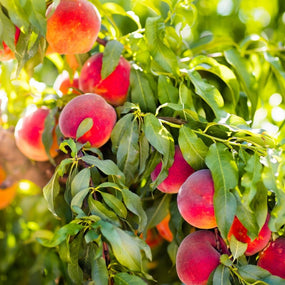
Peach Trees
5 products

Pear Trees
2 products
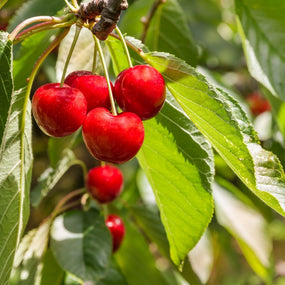
Cherry Trees
0 products
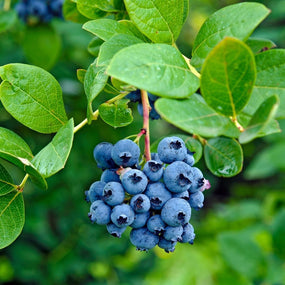
Berry Bushes
3 products
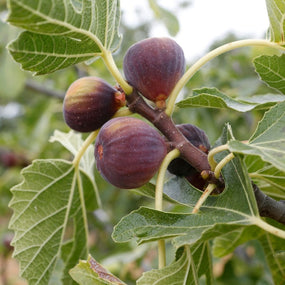
Fig Trees
3 products

Nut Trees
2 products
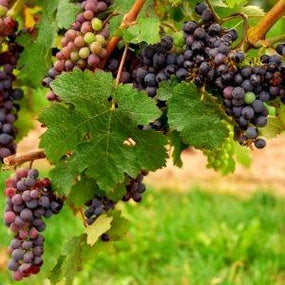
Grape Vines
3 products

Olive Trees
1 products

Avocado Trees
0 products
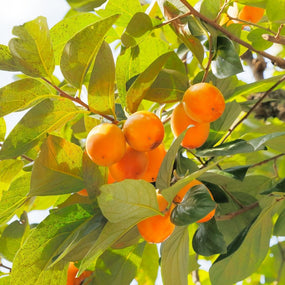
Persimmon Trees
1 products
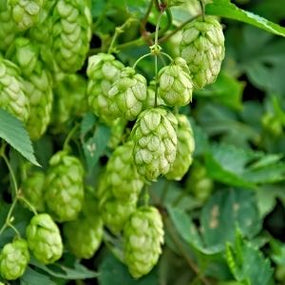
Hops Vines
0 products

Unique and Unusual
5 products
Homegrown fruit is fresher, sweeter, and more satisfying—plus you control how it’s grown. This collection spans apples, pears, peaches, cherries, plums, figs, persimmons, pomegranates, and citrus-adjacent patio choices (in suitable zones), along with chestnuts, for long-term nut harvests. You’ll find self-pollinating options for single-tree plantings and pollination charts in product pages to pair varieties for bigger crops.
Space is no barrier. Dwarf and semi-dwarf rootstocks keep trees compact for containers, raised beds, and tight side yards, while standards build shade and yield for decades. Many selections start fruiting in 1–3 seasons with proper planting and first-year care, offering a fast path to family harvests and lower grocery bills.
Our lineup emphasizes regional adaptability and disease resistance to reduce the need for sprays and simplify maintenance. You’ll see clear notes on chill hours, heat tolerance, and soil preferences, so your tree choice matches your site—and performs optimally.
Growth Habits & Seasonal Interest of Fruit Trees
Fruit and nut trees deliver four-season beauty: clouds of spring blossoms (apples, pears, cherries), lush summer canopies, glowing fall colors (apples, persimmons), and sculptural winter branching—often with textured bark (fig, pomegranate) that reads beautifully in dormant months. Nut trees add stately structure and long vistas as they mature.
Rootstock drives size and vigor. Dwarf/semi-dwarf trees top out lower for easier pruning and picking, while standard trees spread wider, casting cooling shade and anchoring the landscape. Training systems—from central leader apples/pears to open center peaches/nectarines—keep trees productive and ornamental.
Performance matters in real gardens. Our selections balance annual yield with branch strength, bud hardiness, and heat/cold tolerance, so your trees not only crop well but also withstand spring swings, summer heat, and winter storms.
Landscape Uses & Functional Benefits
Edible trees are multi-taskers: they feed your family, boost curb appeal, and support pollinators and beneficial insects at bloom. Use columnar or dwarf forms to flank walkways and frame entries; line a fence with semi-dwarfs for a living espalier; or mix figs and pomegranates into Mediterranean-style plantings for texture and color.
Need privacy? Layer evergreen shrubs fronting a row of semi-dwarf apples or pears for a productive screen that ripens through summer and fall. For large properties, nut trees such as chestnut provide wind filtration, wildlife food, and long-term shade, enhancing property value.
Edible landscaping also supports sustainability. Deep roots improve soil, slow runoff, and capture carbon, while fruit and nut drops can be shared with neighbors, turned into preserves, or used to reduce food waste.
Maintenance & Durability Advantages
Success starts with the right tree, right place: full sun (6–8+ hours), well-drained soil, and a variety whose chill hours match your region. At planting, set the root flare at or slightly above grade, water deeply, and apply 2–3 inches of mulch (not against the trunk). A soaker hose or drip line makes establishment simple and efficient.
Keep care simple and consistent. In early spring, apply a balanced, slow-release fertilizer or compost; in midsummer, side-dress heavy feeders. Winter/dormant pruning shapes structure (central leader for apples/pears; open center for stone fruits), encourages light penetration, and sets spurs for next season’s crop. Many disease-resistant varieties require minimal spraying, especially when there is good airflow and clean sanitation of fallen leaves/fruit.
Plan for longevity. Rejuvenate mulch annually, thin fruit on heavy-bearing trees to prevent breakage, and monitor moisture levels during heatwaves. With these basics, your trees will deliver dependable yields and decades of beauty with surprisingly modest effort.
Featured Fruit & Nut Trees — Woodies Top 8 Picks
‘Honeycrisp’ Apple (Malus domestica)
America’s favorite for ultra-crisp, juicy texture and balanced sweet-tart flavor. Reliable producer on dwarf/semi-dwarf rootstock (easy picking), typically fruits in 2–3 seasons. Requires a pollinator (e.g., ‘Gala’ or ‘Fuji’). Chill: ~800+ • Zones: 4–8.
‘Fuji’ Apple (Malus domestica)
Exceptionally sweet, dense, and crunchy with great storage life—customer-loved fresh or for lunchbox slices. Vigorous on dwarf/semi-dwarf. Needs a cross-pollinator (e.g., ‘Honeycrisp’ or ‘Gala’). Chill: ~300–600 (varies by strain) • Zones: 4–8.
‘Bartlett’ Pear (Pyrus communis)
Classic, aromatic pear with buttery flesh and heavy yields. Adaptable and productive for fresh eating or canning. Partially self-fertile but heavier crops with a partner (e.g., ‘Anjou’). Chill: ~600–800 • Zones: 5–8.
‘Elberta’ Peach (Prunus persica)
Big, freestone peaches with old-fashioned flavor and sunset color. Fast to bear (often year 2–3); great for pies and preserves. Self-fertile. Chill: ~800 • Zones: 5–8 (protect bloom from late frost).
‘Brown Turkey’ Fig (Ficus carica)
Forgiving, heat-tolerant, and self-pollinating with honey-sweet fruit late summer into fall. Excellent in ground or large containers; easy to keep compact. Chill: very low (~100) • Zones: 7–10 (protect/overwinter in 6).
American Persimmon (Diospyros virginiana)
Native, cold-hardy persimmon with rich, honeyed fruit and brilliant fall color. Outstanding wildlife value and dependable yields once established. Pollination: Many selections are dioecious—plant a female cultivar near a male or choose a self-fruiting named variety. Zones: ~4–9.
Tropical-tasting, custardy fruit (banana-mango notes) on a hardy native understory tree—great for edible woodlands. Large, lush leaves add bold texture. Pollination: best crops with two different varieties. Zones: ~5–8(9).
Dunstan Chestnut (Castanea spp.)
Fast-growing, blight-tolerant chestnut famed for sweet, easy-peeling nuts and a handsome shade canopy. Excellent for food forests and wildlife. Pollination: plant two or more genetically distinct trees for nut set. Zones: ~5–9.
Plant once—harvest for years. Each of these nursery-grown fruit & nut trees is selected for real-world performance, flavor, and adaptability, with clear guidance on pollination, chill hours, and sizing so you plant the right tree for your space. Enjoy earlier first crops, lower grocery bills, and four-season beauty—from spring bloom to fall harvest.
